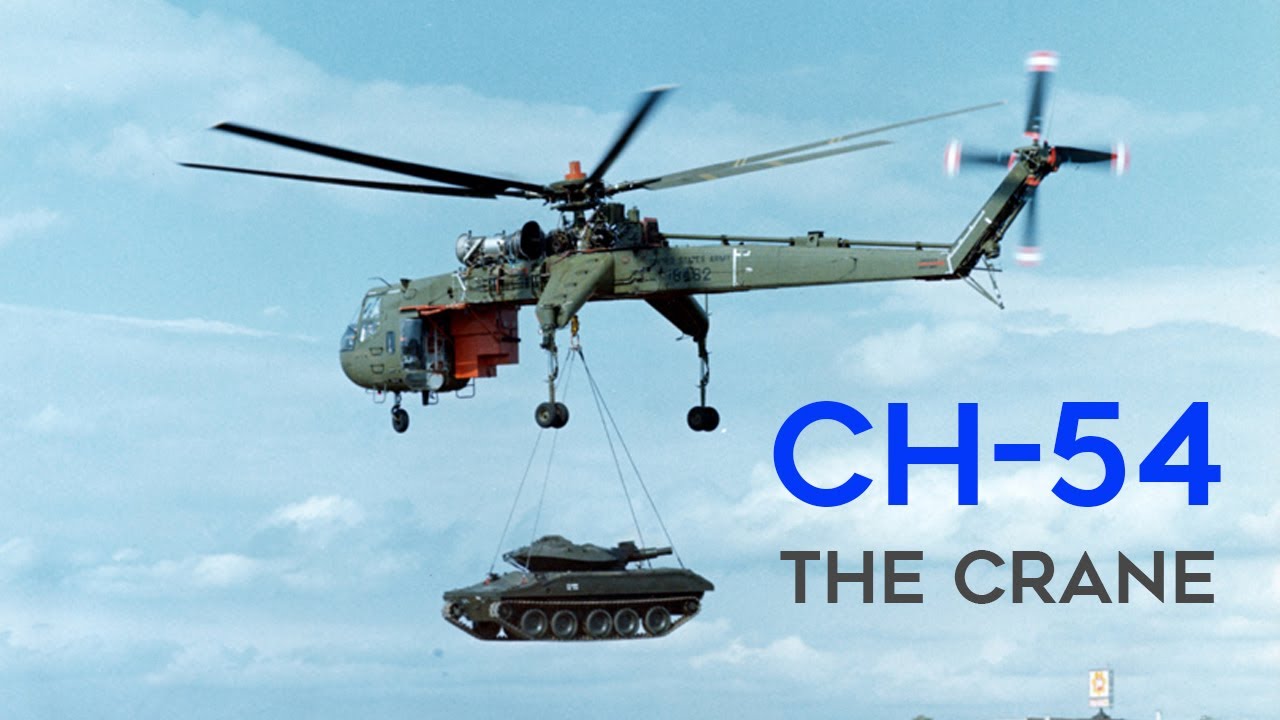
The Sikorsky CH-54 Tarhe was designed and manufactured by Sikorsky Aircraft for the United States Army with its maiden flight on 9 May 1962.
The CH-54 Tarhe helicopter was 𝐛𝐨𝐫𝐧 to transport oversized cargoes of the US Army to hard-to-reach areas. The CH-54 was extremely successful during the Vietnam War. This versatile helicopter was used for various missions, including recovery, rescue, infantry transport, medical supply and even armor transport operations.
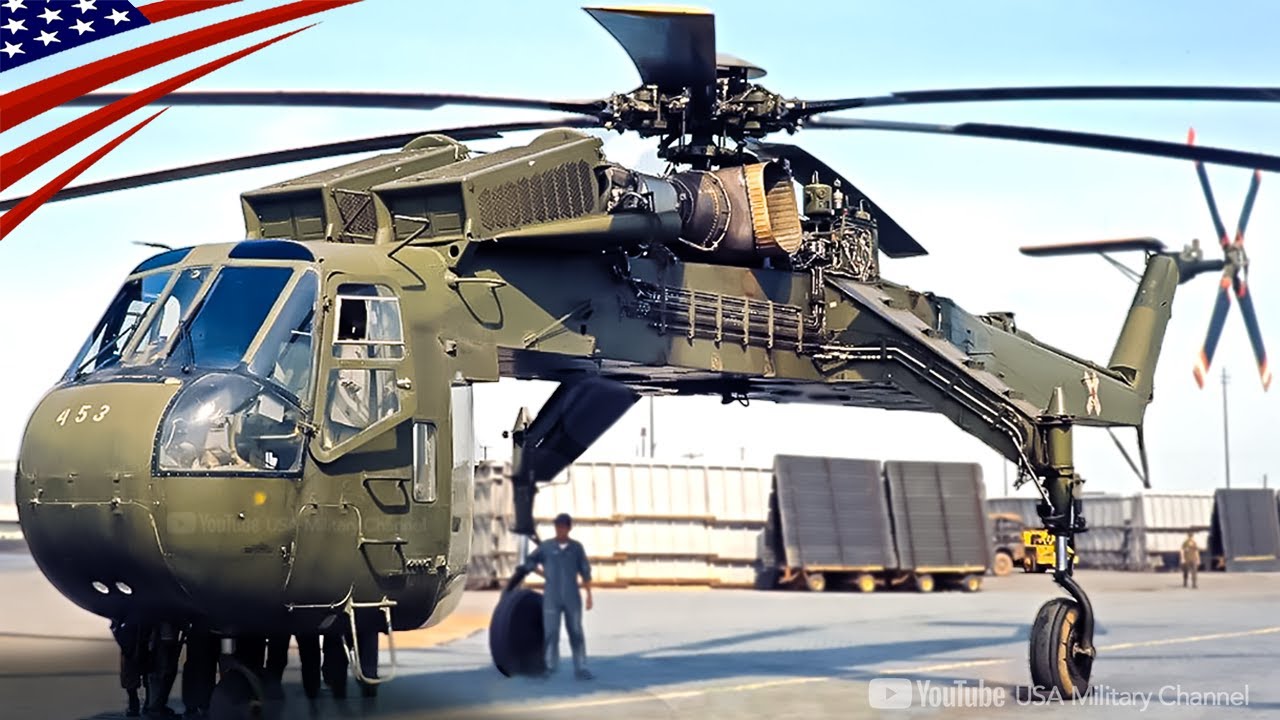
The CH-54 was developed in 1958 as a helicopter designed to carry heavy under slung loads as opposed to carrying equipment internally. This would allow the lifting of awkward shaped and heavy pieces of equipment such as artillery pieces. The aircraft has a unique look with a pod and boom design, the forward pod housing the crew and nose landing gear with a distinctive rear facing window. This features a backward facing seat with full controls so the pilot can take control while loading or unloading.
CH-54 is powered by two turbo shaft engines which turn a single 6 blade rotor and a four blade tail rotor. Out riggers provide a wide clearance for loads and special pods were developed which could carry 67 troops or 48 stretchers or even a field hospital unit, over 10,000kg of cargo could also be carried.
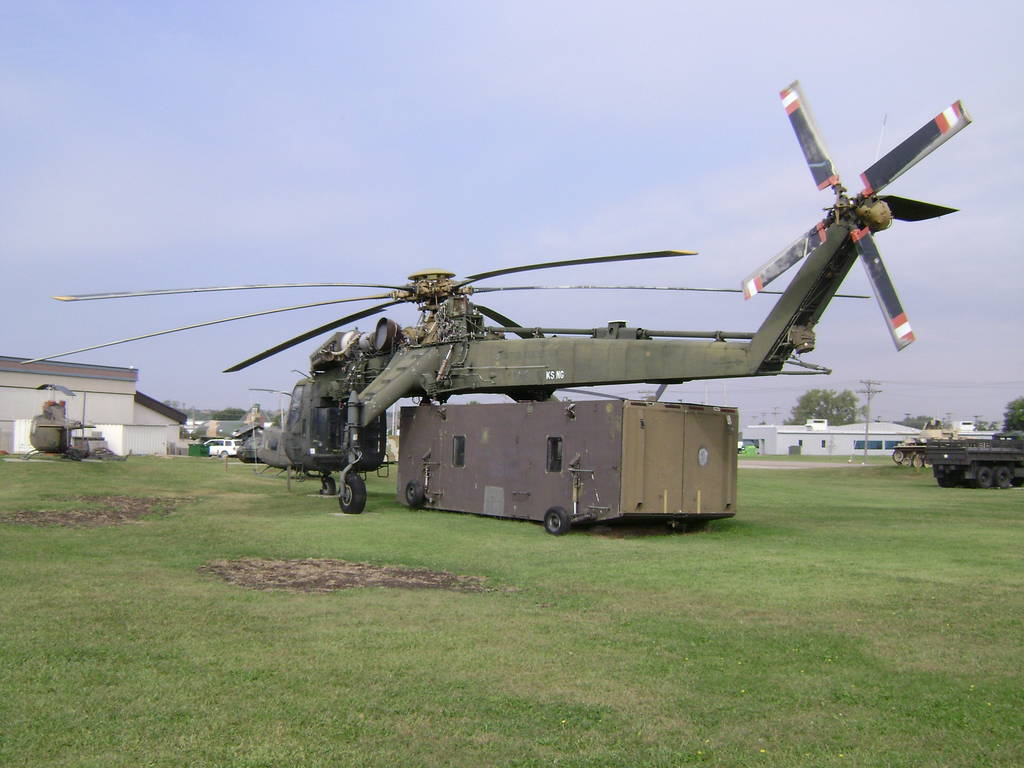
The helicopter was originally designated S-64, and later renamed the CH-54 Tarhe to fit in with the US classification system for helicopters. The Tarhe demonstrated the very best capabilities in combat, climbing with maximum speed of 100 km/h even being overloaded. The CH-54 has an maximum external payload capacity of 12 t. Its unique shape allowed to handle all kinds of loads.
CH-54 Tarhe participated in the Vietnam War since 1964. Here they were put to various tasks, typically to provide logistical support and heavy transport activities in aid of American ground troops. In the theater, CH-54s would routinely be used to reposition artillery pieces such as the M101 howitzer, and even airlift bulky payloads such as bulldozers and patrol boats. In terms of retrieved aircraft alone, in excess of 380 were reportedly recovered via CH-54, resulting in the saving of several hundred million dollars.
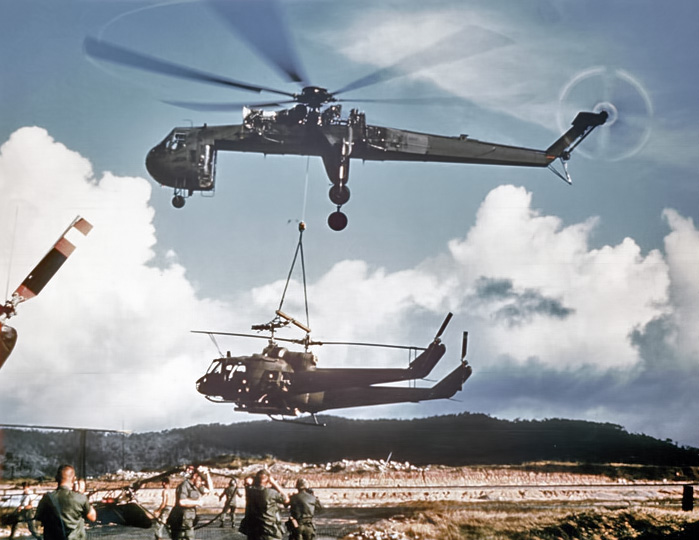
The Tarhe can hold its cargo up and tight against its center spine to lessen drag and eliminate the pendulum effect when flying forward, as well as winch vehicles up and down from a hovering position, so the helicopter can deploy loads while hovering. During the Vietnam War the CH-54 Tarhe was one of the safest US Army’s helicopters to fly. In comparison to the AH-1 Cobra and UH-1 Iroquois the losses of CH-54 helicopters was minimal.
Due to budget cuts, the Heavy Lift Helicopter (HLH) program was canceled and the CH-54 was not upgraded with larger engines. The relatively small fleet proved costly to maintain, thus the tandem-rotor Boeing CH-47 Chinook, a rival heavy lift helicopter, gradually supplemented the CH-54 for most transport duties, eventually replacing it in Regular Army aviation units during the 1980s.
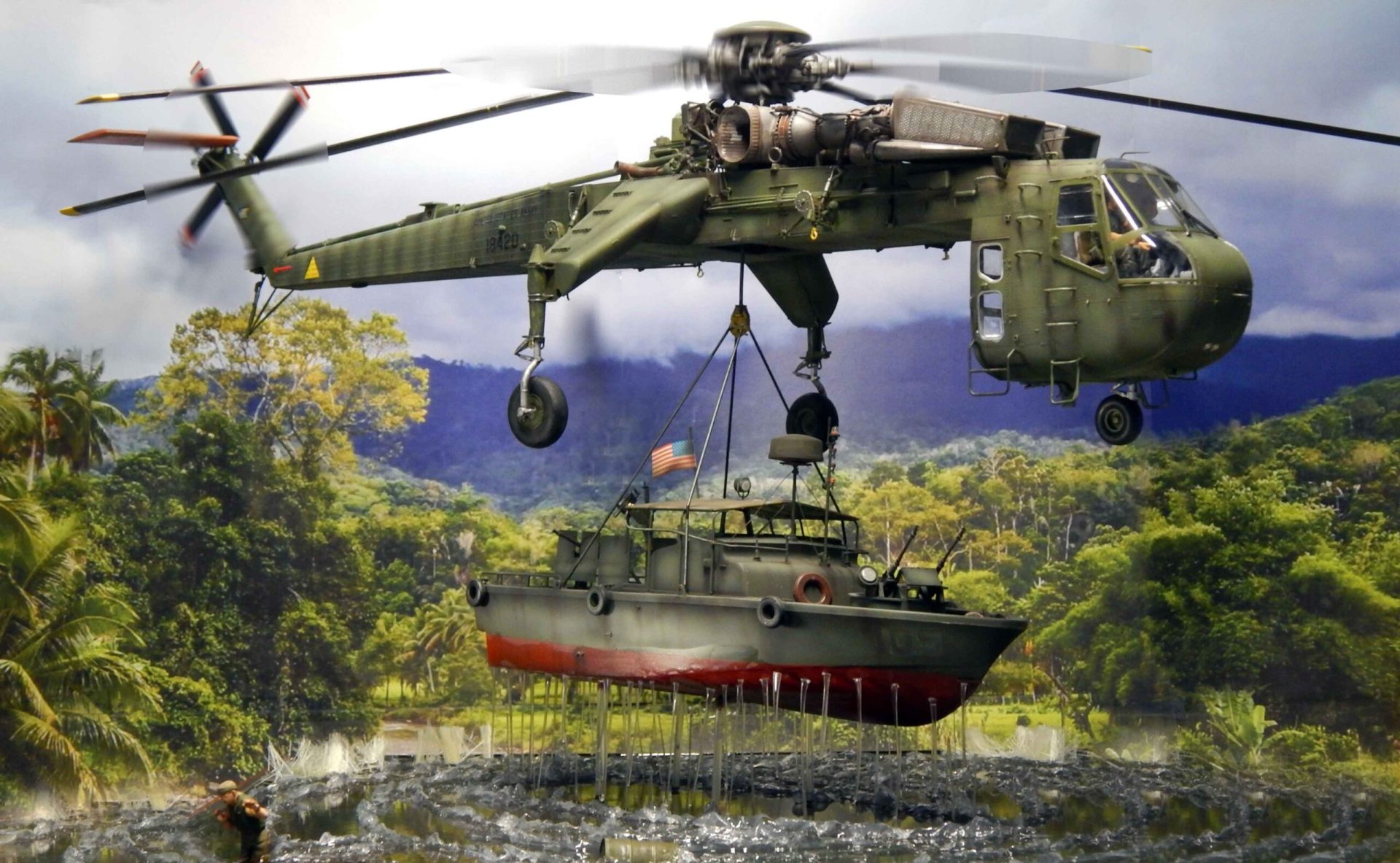
Soucre: military-wiki.com





